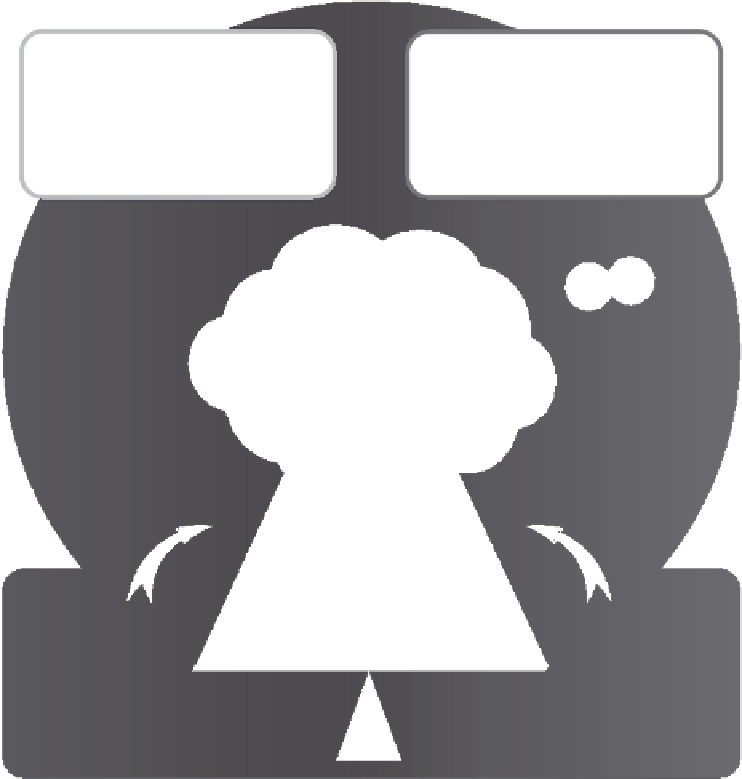Game Development Reference
In-Depth Information
Storytelling and the Virtual Environment
Story Presentation:
fundamentally there are 2 ways to do it
Diegesis
the narrative telling of a story
Mimesis
the showing or enacting of a story
Back Story
Visual Elements
Our temporal and spatial perceptions
in a virtual environment are under the
influence of our subjective experience.
Things like these can affect our
understanding of the presentation:
• Camera Position
• Real Life Interruptions
• Avatar Position in Space
• Internet Connections
• and others
Seeing the story from
many angles, some
of which are
other cameras
Architecture,
Landscape and
Cultural Design
Oral History of
Social Group
Diegetic Elements
i
n a virtual environment
come to us from the
progression of a visual
experience, and the
audio elements of our
combined narratives.
Non-diegetic Elements
in a virtual environment
come to us from outside
the world of the story -
things like the UI,
the HUDs, and the
theme music.
Spatial and
Structural
Experience of
the Virtual
Environment
Temporal
Experience of
the Virtual
Environment
FIGURE 16.5
Chart showing the methodology of storytelling and how that involves the virtual environment. The
story is presented initially with Diegesis, and/or Mimesis. The virtual world story environment contains verbal things
such as backstory and oral history, and visual things like architecture, landscape and cultural design. Also entering into
that enviroment are diegetic elements of combined narrative, and audio, as well as nondiegetic elements like the UI and
HUDs. Underlying the whole are the temporal, spatial, and structural elements the avatar experiences. Furthermore, the
perception of the story can be inluenced by a number of factors such as camera position, real life interruptions, avatar
position, internet connection, etc.


























































